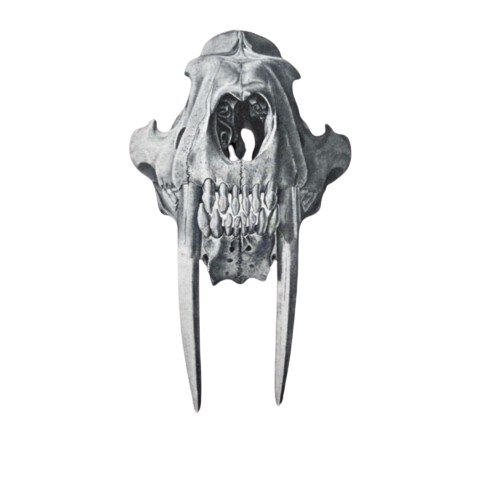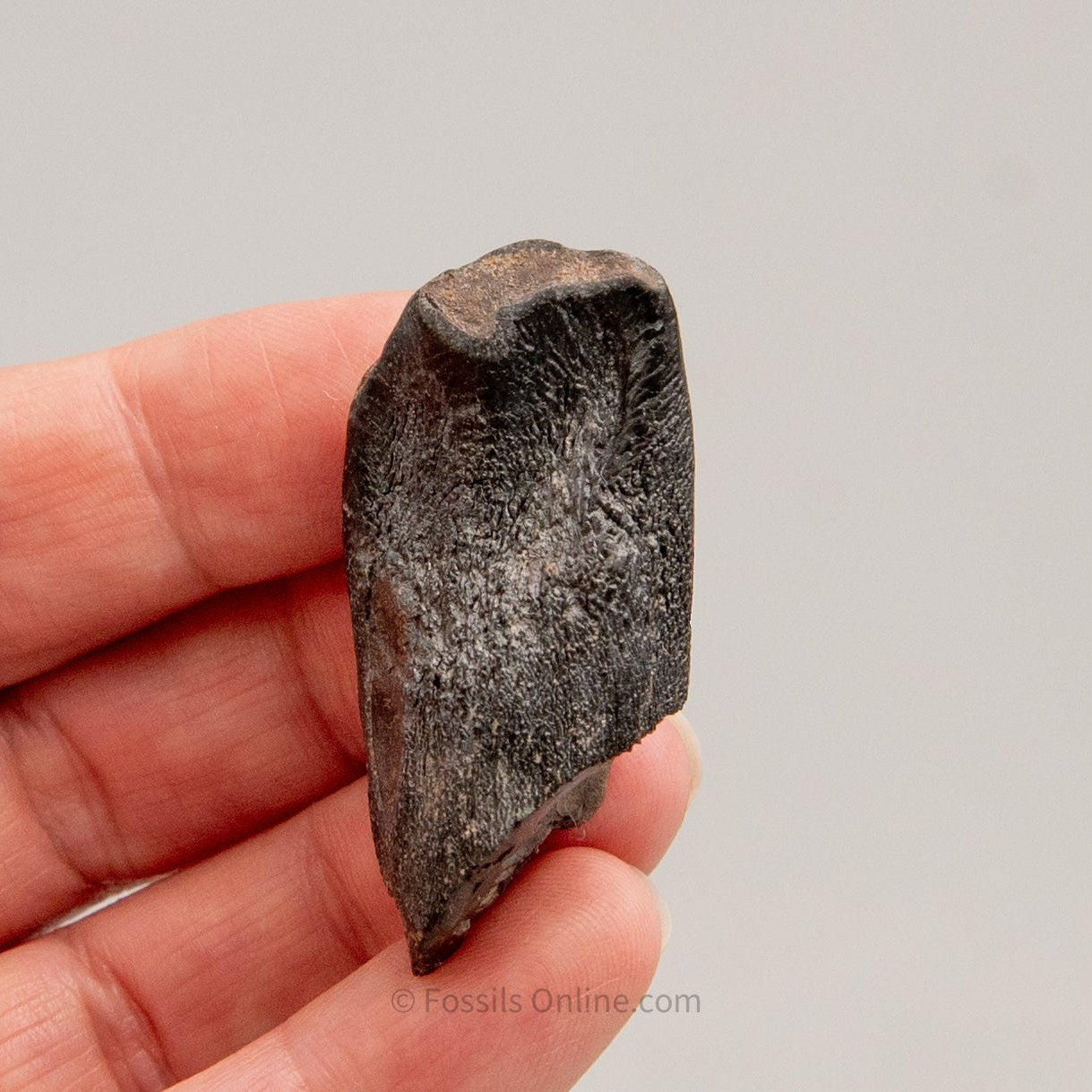

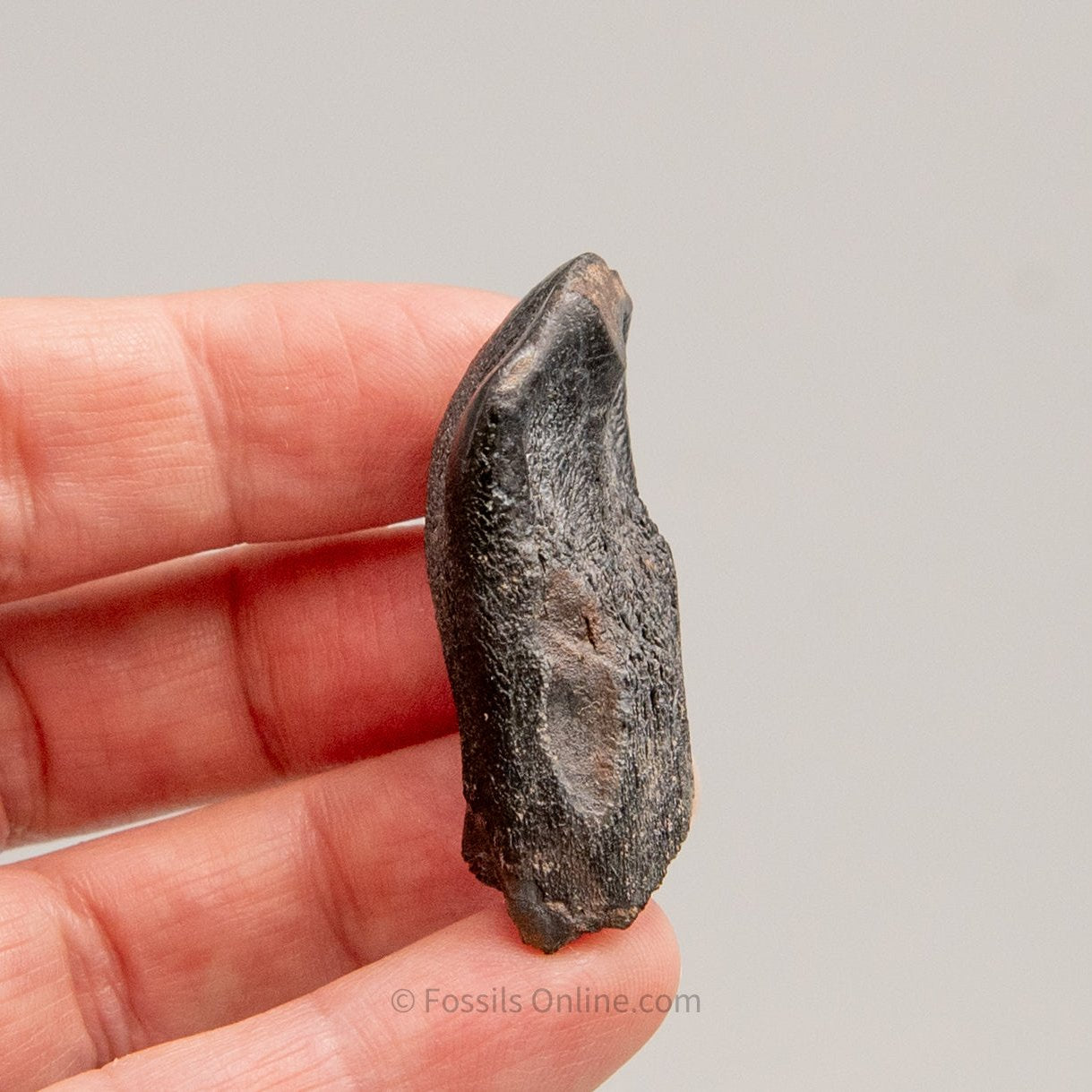
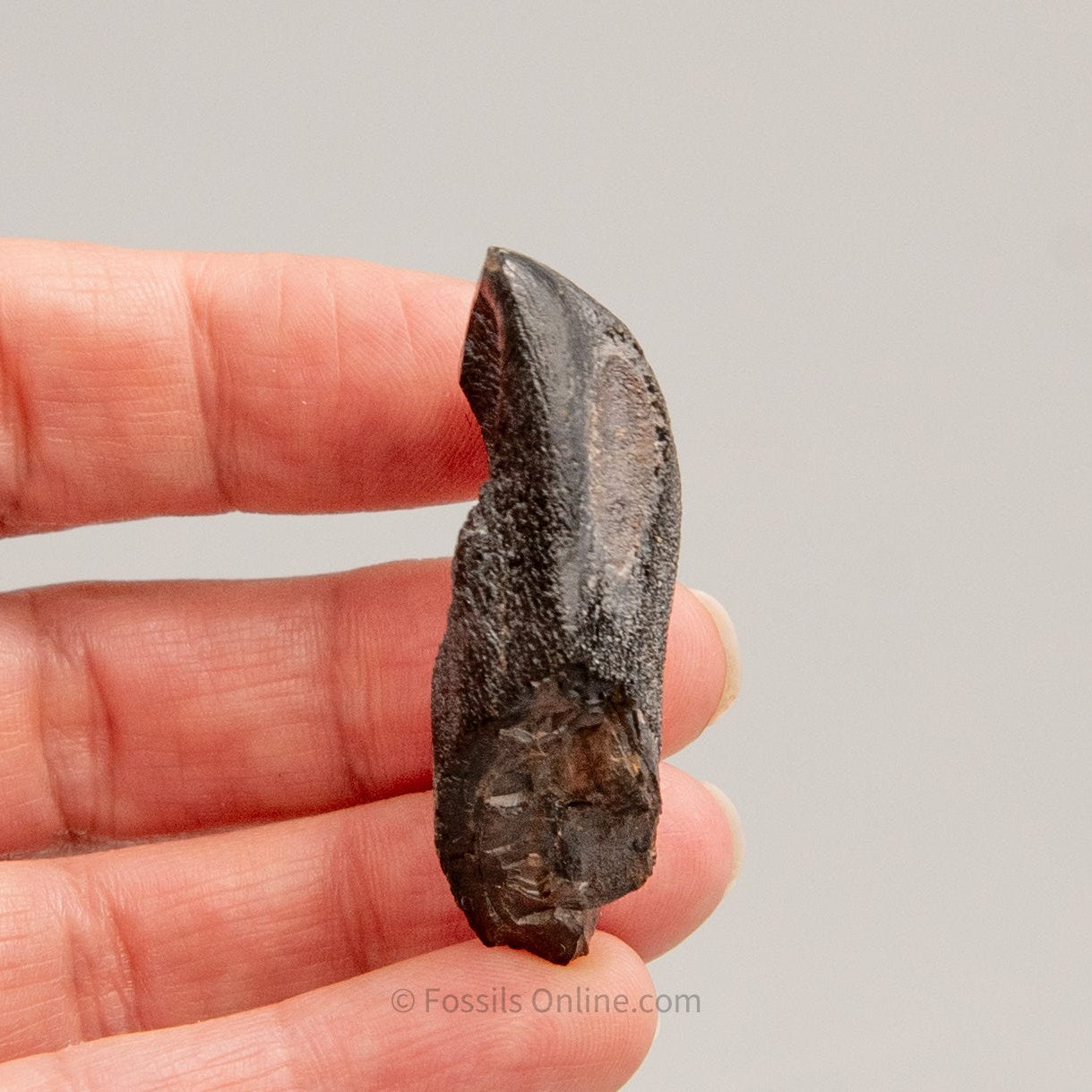
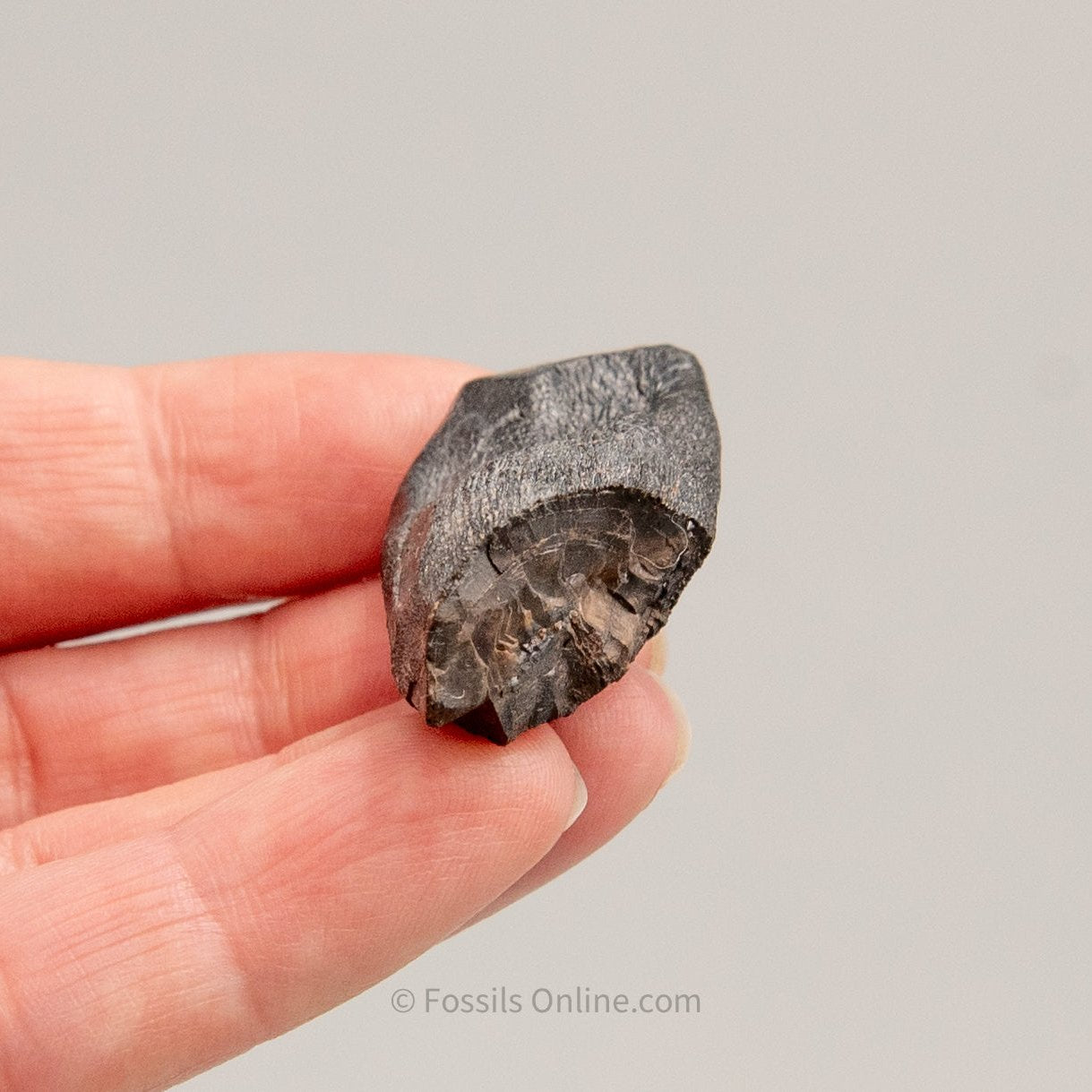
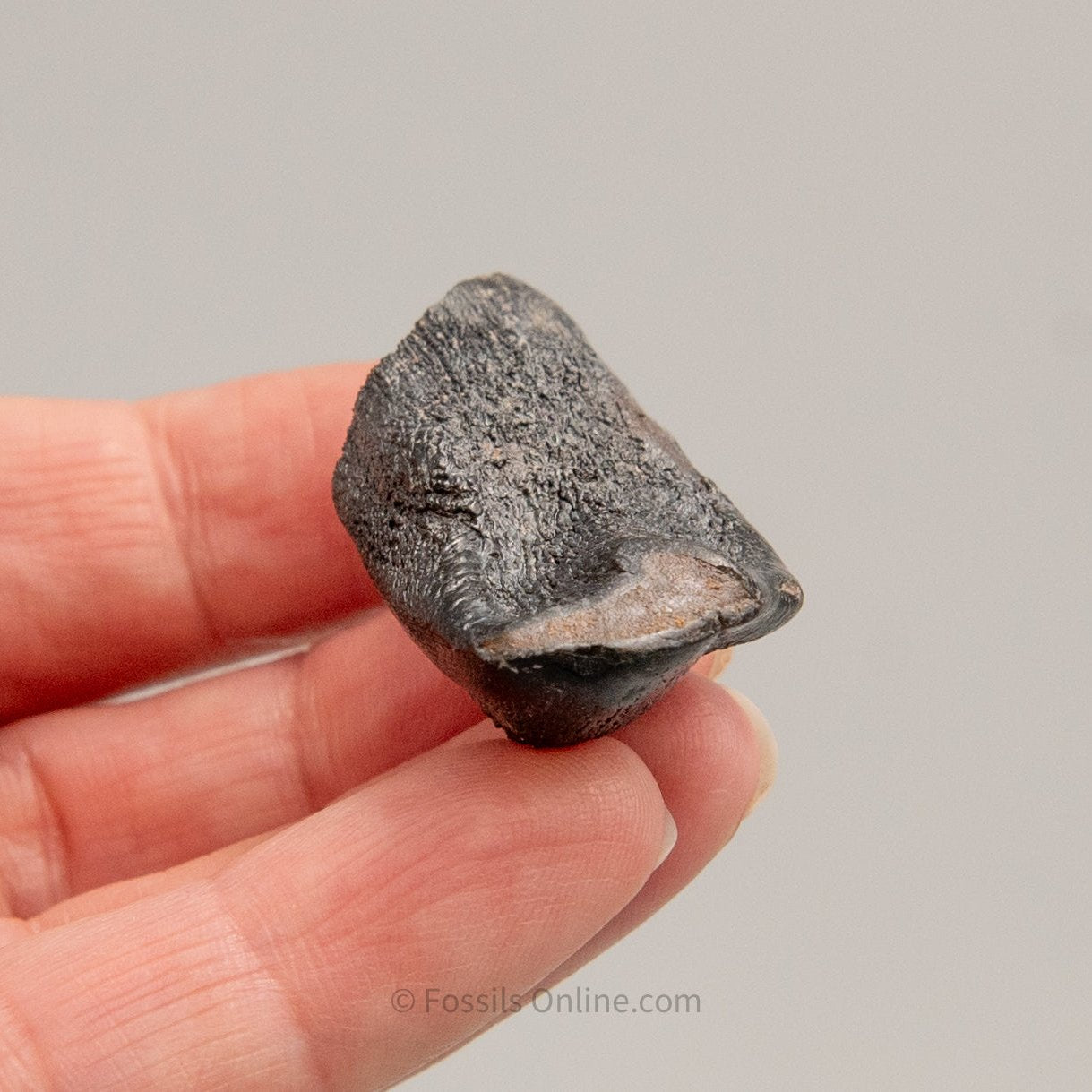
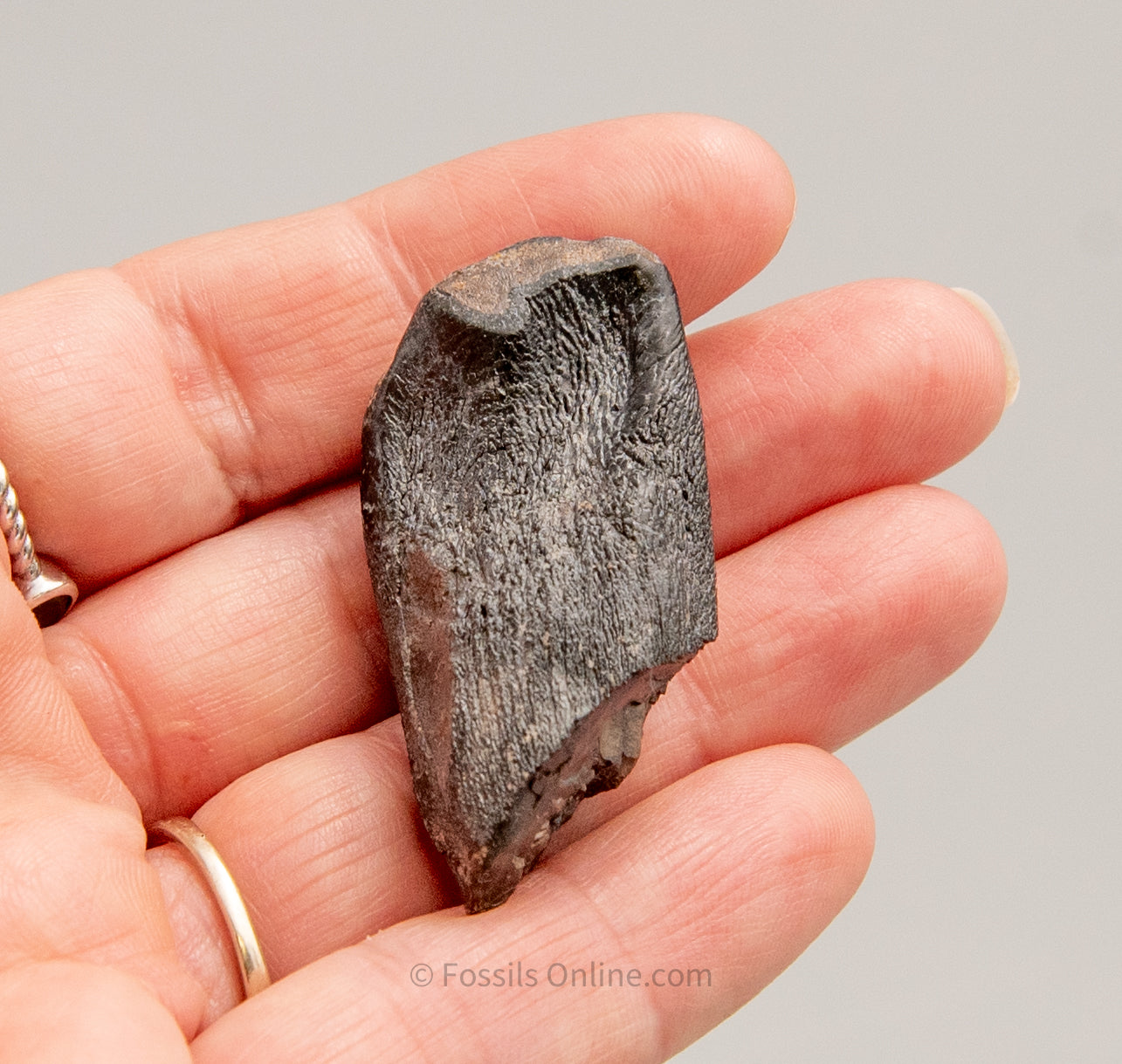
Camarasaurus Real Sauropod Dinosaur Tooth
This is a real Camarasaurus tooth crown from the Jurassic period, found in the Morrison Formation, Big Horn County, Wyoming. The crown is highly detailed, with a sturdy, spoon-like shape typical of sauropod teeth. There is some wear on the chewing surface, but it’s still in great condition and retains a natural patina.
The Camarasaurus, a notable dinosaur from the Late Jurassic period, is recognized for its distinctive features and importance in paleontology. This herbivorous sauropod lived approximately 155 to 145 million years ago, during a time when large dinosaurs dominated the landscape.
Physical Characteristics: Camarasaurus, which means 'chambered lizard' due to the hollow chambers in its vertebrae, was a sizable sauropod characterized by its relatively stout and robust build compared to other long-necked dinosaurs. It had a large, box-like skull equipped with strong, spatulate teeth suited for chewing coarse vegetation. The average length of a Camarasaurus ranged from 49 to 75 feet, and it had a massive, barrel-shaped body, a long, whip-like tail, and pillar-like legs to support its considerable weight.
Discovery and Fossils in Wyoming: Camarasaurus fossils have been discovered across the Morrison Formation, which stretches through several states in the Western United States, including Wyoming. This formation is one of the most fertile sources of Late Jurassic dinosaur fossils in North America. In Wyoming, Camarasaurus remains have been found in several sites, making it one of the more commonly encountered sauropods in the region.
The well-preserved fossils of Camarasaurus in Wyoming have provided vital insights into the anatomy and lifestyle of sauropods. These discoveries include nearly complete skeletons, which have helped paleontologists understand the growth and development of these massive creatures, as well as their ecological role.
Paleontological Significance: The Camarasaurus is particularly significant for its well-understood skull anatomy, which is rare among sauropods, many of which are known from relatively fragmentary skull material. The robust nature of its teeth suggests a diet of tougher vegetation, offering clues about the ecology of the Late Jurassic period.
As one of the more common sauropods in the Morrison Formation, the Camarasaurus contributes to our understanding of the diversity and distribution of large herbivorous dinosaurs in the Jurassic ecosystem. Its presence in Wyoming's fossil record is especially important for reconstructing the paleoenvironment of the region during the Late Jurassic, shedding light on the types of vegetation present and the interactions between different dinosaur species.
In summary, the Camarasaurus stands out as a key species in understanding the dynamics of Jurassic ecosystems, with its fossils in Wyoming playing a critical role in piecing together the history of this fascinating period.
Species
Camarasaurus grandis
AGE
Jurassic
LOCATION
Big Horn County, WY
FORMATION
Morrison Formation -- Salt Marsh Member
Size
1.7"
Choose options







